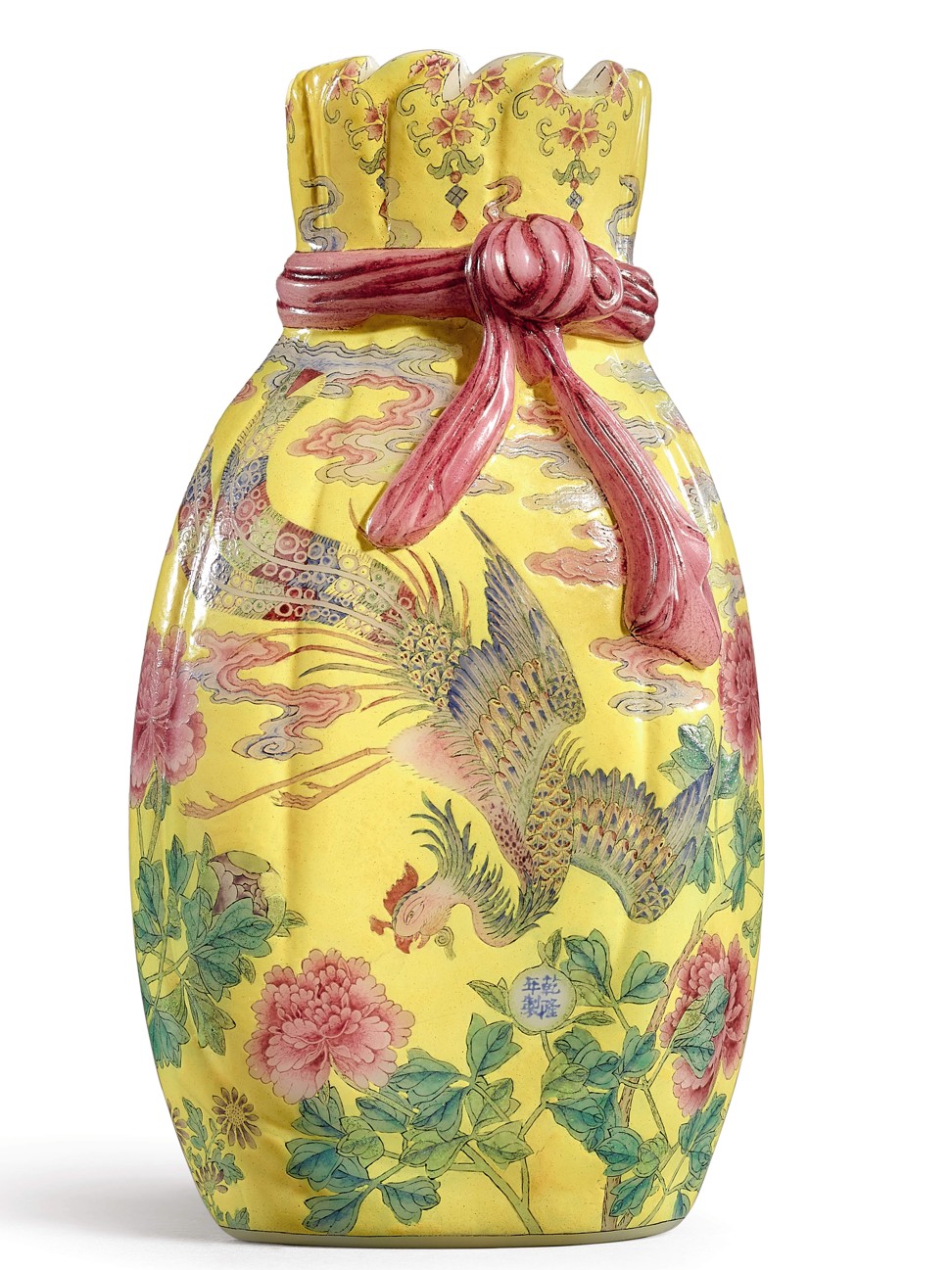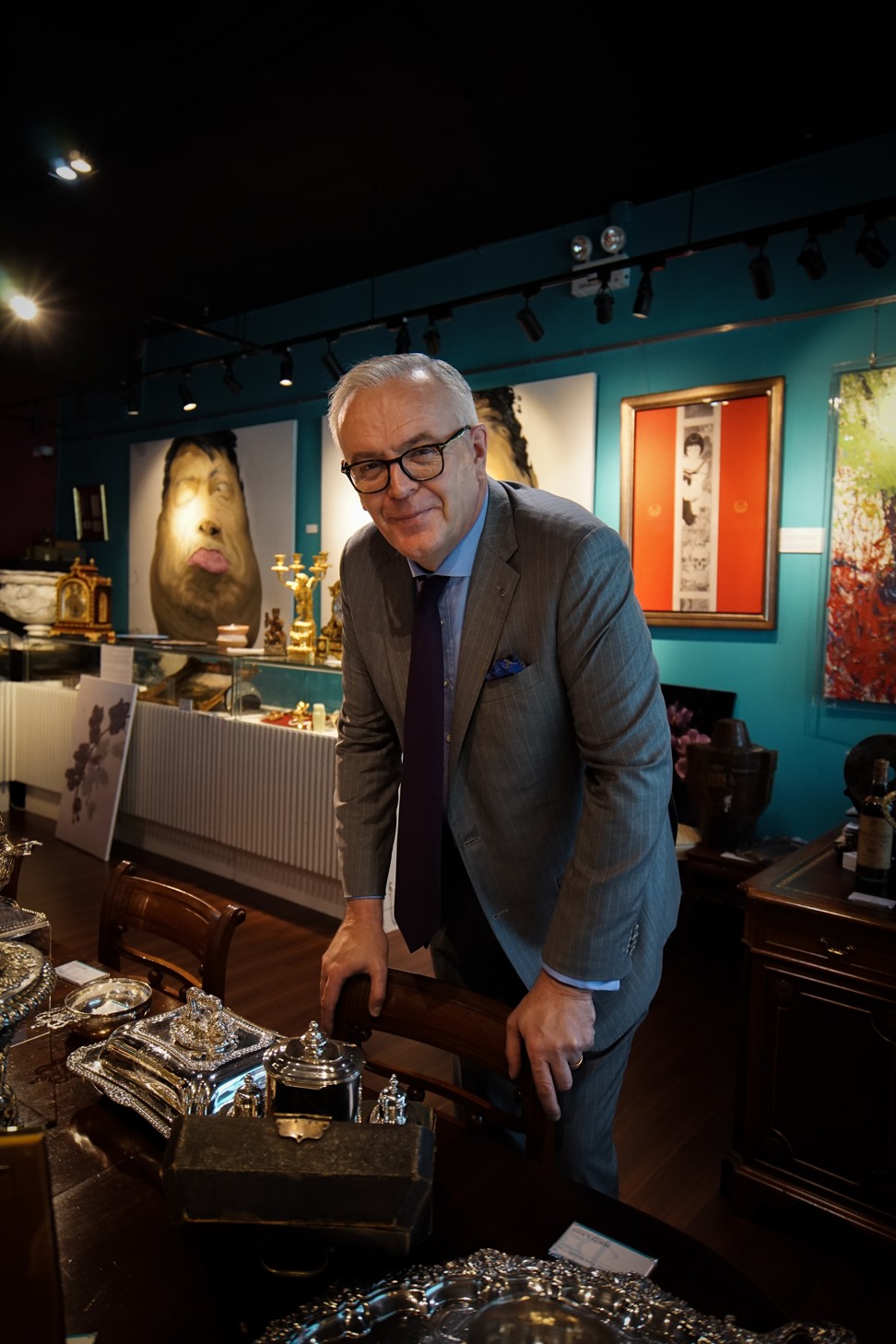
Sotheby’s stays upbeat amid global slowdown and turmoil in Hong Kong
An 18th century Qing dynasty glass vase estimated to be worth US$25 million is up for grabs, among other items, in Sotheby’s’ October sales, but as the Asian auction season rolls around, will buyers be willing to open their wallets?
According to Kevin Ching Sau-hong, chief executive of Sotheby’s Asia, additional phone lines will be installed in the sales rooms to cater to an increase in remote bidding. Other than that, he hopes it will all be business as usual.
“Every season there are different policies and factors that might affect buying sentiments and decisions, including the macroeconomic environment, economic growth and market expectation, among others,” he says. “Many of them have been in place for some time, yet we haven’t seen any major impact on our business.”
Sotheby’s Hong Kong spring auctions took in HK$3.8 billion (US$485 million) in total, the second highest level since 2013.

One of the top lots in October will be a glass vase covered in yellow enamel, decorated with two phoenixes flying among clouds and peonies, and shaped like a cloth pouch with a ribbon sash in relief around its neck.
According to Nicolas Chow, Sotheby’s Asia chairman, the 18th century vase once belonged to Prince Gong, a powerful statesman in the late Qing dynasty and brother of the Xianfeng Emperor.
His legendary collection was sold by the imperial family after the 1911 revolution and ended up in America, where it passed through two prominent collectors before being sold to the present owner, tycoon Robert Tsao Hsing-cheng, in 2000. Tsao bought it at auction for HK$24 million. Today, it is estimated to be worth HK$200 million.
Another well-known ceramics collector, property developer Alan Chuang Shaw-swee, is also selling. One of the pieces from his collection is a blue-and-white bowl decorated with daylilies from the 15th century Chenghua period of the Ming dynasty.
A similar “palace bowl” was sold for HK$141 million in October 2013, and so the HK$50 million estimate for the daylily bowl may indicate a conservative approach to pricing.

Other highlights unveiled so far include a six-foot-wide painting of Huangshan by Wu Guanzhong, called Sunrise in Lofty Mountains (1983), and paintings by two of the most famous Ming artists – Bada Shanren and Shitao.
On the contemporary side, Belgium’s Baron and Baroness Gillion Crowet are selling 30 paintings by Chinese artists that they have acquired since visiting China in 2004.
These include some of the best-known artists of the 1990s: Zeng Fanzhi, Zhang Xiaogang, Liu Ye, Yue Minjun, Fang Lijun, Zhou Chunya and Wang Guangyi, with a total value estimated at HK$73 million.
What lies ahead for Hong Kong’s Art Futures Group
Bloomberg retracted the article in May, saying it was wrong to suggest that Art Futures Group had induced investors into overpaying for art after the company’s founder, Jeremy Kasler, vehemently argued that the nine-year-old business had delivered as promised.
This has been its business model: it sells contemporary Chinese art to investors for a commission and then it keeps the art, promising to lease it out to third parties, such as corporate offices and hotels, to generate a guaranteed annual yield of 6 per cent for at least two years. It also tells investors that they stand a good chance of a profitable exit, because the art they buy has a healthy secondary market.
Turns out Kasler was looking to exit the business himself after he and fellow Art Futures Group managers moved to Australia.
Last month, Kasler sold the company to Briton Jonathan Macey, owner of Macey & Sons, a Hong Kong-based private art dealership and online auctions platform.

Macey, who worked at Art Futures Group for 18 months when he first arrived in the city in 2009, tells The Collector that beyond the bad press, the company has an impressive inventory and client list, and he hopes to turn it into a better, and bigger, business.
He has made a few changes beyond dropping the name. Investors are now offered works by Asian and Western artists, instead of just Chinese ones, and he has hired Benjamin Sigg, nephew of famed collector Uli Sigg, to pick the contemporary art on offer. Investors can also invest in antiques – Macey’s speciality – to build up a diversified portfolio.
“I am the only investor and it’s a great leap of faith,” Macey says. “But I believe this is a positive time to be investing in art. The new demographics of clients, the young people of Hong Kong, that’s what I am interested in.”

